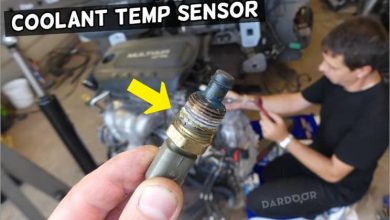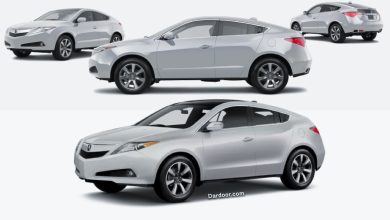
Today there will be no obscure conversations, calculations of litres of fuel consumed or saved on engine warm-up, assessment of environmental damage, etc. I do not need all this. I just want to drive my car and not think about whether I must warm up my car or not. Only life experience and practice. So we will try once again to understand the eternal question: is it necessary to warm up my car in winter and how to do it more correctly?
A year ago, a new car appeared in the family (for obvious reasons I’ll not mention its brand), which is equipped with a modern small gasoline engine with direct fuel injection and turbocharging. And the first thing I noticed was that with the advent of cold weather, I had to warm up the car to the minimum comfortable temperature in the cabin longer than my previous car, which had an engine one and a half times larger in working volume. It went to the operating temperature much faster, but…. the fuel consumption was, of course, more. I was saved by the fully heated windshield and rear windows, mirrors, washer nozzles, as well as the seats and steering wheel. In general, it would be fine, if you have no time and you must drive the car and go alone, however, there is a problem: in the morning I take my child to kindergarten. First, putting your baby in a cold car on a cold child seat is completely wrong. Secondly, to leave the micro-district in which I live, you need to turn at a T-shaped intersection that is not equipped with a traffic light onto a road along which there is a fairly dense stream of cars in both directions.
Let me emphasize that in the morning the flow is dense and the gaps between cars, into which you can wedge yourself, are minimal. And having wedged in, you need to immediately put pressure on the gas so as not to slow down the flow and not create interference. That is, you want it or not, but I had to “turn” the motor. What kind of warm-up at a leisurely pace, as some experts advise, are we talking about? If, after turning at an intersection, I do not quickly pick up speed, the car in front of which I performed the maneuver may simply not have time to slow down and…. And I’m taking a child! And if you stand at the crossroads for a long time and “seize the moment” when the distance between the cars is large and you can safely leave, then it is also problematic. A string of cars is quickly gathering behind me – everyone is in a hurry: some to work, some to go shopping. That is, I need the engine to be warmed up to operating temperature at the beginning of the trip, and I could safely step on the gas, using the entire power reserve of my internal combustion engine and implement the torque on all four wheels of the all-wheel drive transmission of my car. As a result, in the first winter, I was forced, together with the owners of diesel cars, to leave the house earlier than usual and warm up the engine. Fortunately, the neighbours at the entrance where my parking space is located do not show discontent about my morning “dancing with tambourines”. when the distance between the cars is large and you can safely leave, then it is also problematic. A string of cars is quickly gathering behind me – everyone is in a hurry: some to work, some to go shopping. That is, I need the engine to be warmed up to operating temperature at the beginning of the trip, and I could safely step on the gas, using the entire power reserve of my internal combustion engine and implement the torque on all four wheels of the all-wheel drive transmission of my car. As a result, in the first winter, I was forced, together with the owners of diesel cars, to leave the house earlier than usual and warm up the engine. Fortunately, the neighbours on the porch, where my parking spot is located, do not show dissatisfaction with my morning “dancing with tambourines”.
Quiet and clean, thanks to an efficient catalyst, the exhaust of a new car does not irritate people. Although, as practice and reports of incidents show, a loud roar and smoke from the exhaust pipe sometimes cause various objects to fall on the roof of cars.
Many motorists, in order not to leave the house earlier and not get cold, warm up the engine, even when ordering a new car, pay for the “remote engine start” option or set an alarm with this function. On the one hand, this is a good solution to the problem, but how many unpleasant cases of damage to cars are associated with this very autostart, which can either “glitch”, or even it turns out that serious violations were committed during the installation process? In addition, when the engine is idling for a long time (my small-capacity motor heats up slowly at idle speed), the resource of the engine oil is consumed faster, which during the warranty period I already have to change every 15,000 kilometres, which is obviously a lot for city use. After all, I spend a decent amount of time in traffic jams. Of course, you can come to MOT and every 7, 5 thousand kilometres, as some experts recommend, but then my costs for servicing the car during the warranty period at the dealer will double. And these are significant additional expenses that you do not want to go to. I made a choice in favour of a modern engine in order to save on fuel and certainly not to lose these savings on maintenance.
As a result, a motor with oil, for which the additive package has worked strongly, wears out much faster than it should. And whether I will change the car in the near future, alas, is unknown. The economic and income situation is unpredictable. And it is not included in the plans to pay for overhaul, as it is commonly believed, a “disposable” motor. In the specialized press, horror stories are constantly heard about the fact that “downsizing” motors, from a small working volume of which by forcing “squeeze” power comparable to two-litre “aspirated”, have a resource of 150-200 thousand kilometres. It turns out that with my annual mileage of a little more than 40 thousand km. (I travel a lot for work + every year we go to the sea on vacation with my family) the ICE resource should be exhausted by the fourth year of operation.
In general, before the winter of 2022-2023, I decided to radically solve the problem and put on the car a pre-starting liquid heater with a timer and the ability to remotely start from a key fob (by radio signal). I didn’t have to worry about making a choice – the dealer where I service the car offered a homologated Eberspächer Hydronic unit, the installation of which is included in the list of offered additional equipment.
At one time I already had a car with the installed “boiler” of this German company. There were no problems with him, although I bought a car in the secondary market with a range of more than a hundred thousand kilometres. There were also no reasons to contact the service regarding the repair of the liquid heater, but I, realizing that I was driving a used car, still studied the presence and location of branded service centers where the equipment could be repaired. There are more than enough of them – over 250 throughout Russia. Only in the Moscow region, through which I have to wander on business, “points” where dozens of qualified assistance will be provided. By the way, if your car has already passed the warranty, and there is not much point in holding on to your dealer, then installing an Eberspächer Hydronic pre-starting liquid heater on “SUV” will cost significantly less than the official. In an accredited installation center, you will be charged about 40,000-45,000 rubles for everything (unit + installation). The total cost may differ depending on the power of the installed heater (4 or 5 kW), the control device, the device of the car itself and the connection diagram (warming up only the engine or warming up the engine and interior).
The price of such a useful option for a car is comparable to the cost of a new TV or smartphone, and the effectiveness and feasibility of such a device in terms of preserving the resource of the car and comfortable and safe movement has long been beyond doubt.








